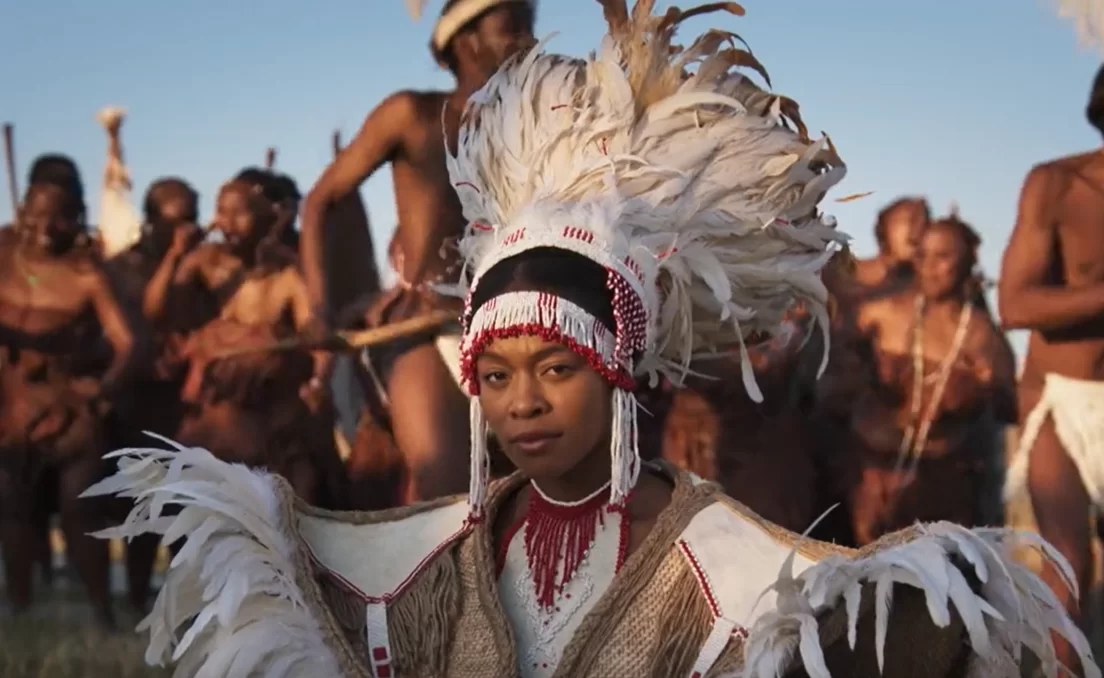
Custodians of Costume & Culture: A Conversation with Sheli Masondo
Jul 1
6 min read
1
55
0
Interview by Sui Moipolai | June 29, 2025
From “wardrobe mistress” to visionary costume designer, Sheli Masondo’s creative journey is stitched with purpose, research, and cultural resonance. In this exclusive dialogue with Sheli opens up to Sui about building character through costume, the weight of texture, the importance of ancestral memory, and why designing from the soul still matters.

From Table Read to Setting the Scene
Like many creatives, Sheli didn’t begin with a clearly defined title. She recalls how early career roles in film often carried vague or dated descriptions, like “wardrobe mistress” — a label that never quite fit.
Sui: Hello Dumelang, this is Sui from Stagnot. And today, I’m in conversation with the incredible Sheli Masondo — known for work that quite literally threads stories into reality. From Black is King to Shaka iLembe, her work has brought characters to life in ways we often feel but don’t always see. Sheli, how are you?
Sheli: Hello, hello everyone. I’m good! I’m Sheli Masondo, and yes — I’m a costume designer for film and television.

Sui: Straight to the point — I love that. Now Sheli, let’s take it back for a second. Did you always know you wanted to be a costume designer, or did the identity shape itself as your journey evolved?
Sheli: I had no idea at first. When I started, we were all called “wardrobe mistresses” — which always felt strange to me. What does that even mean? It felt temporary, like a title someone invented because a gap needed filling.
Sui: It really does sound like someone was just making up job titles on set!
Sheli: [Laughs] Exactly. But once I was in the industry, I realized — no, I’m not just here to assist. I’m here to design. To build character. To work closely with directors and production designers. Once I started diving deep into storytelling through costume, I knew: I’m a costume designer. That’s my lane.
Finding Story in the Stitch
“It starts with the script — but the fabric fills in the blanks.”
One standout moment in Sheli’s career was working on Trackers (by Deon Meyer). The production required her to visually translate a smuggling journey across Southern Africa — without any wardrobe changes.
Through meticulous deconstruction of garments, layering, and textural breakdowns, she helped audiences understand the fatigue, danger, and progression of time, all without saying a word.

Sui: What’s striking about your process is how much you speak about character. Tell me — how do you approach building a look? Is it always by the book, or do you allow space for improvisation and flow?
Sheli: It starts with the script and the character bios, but those are usually not enough. So I add my own interpretations. The first things I think about? Color and texture.
For example — urban stories often deal with themes like “new money” versus “old money.” New money? Bold, loud colors. Over-accessorized. Old money? Muted tones. Subtle fabrics. The clothes tell the story before a word is spoken.
Sui: That’s poetic. And it makes me realize wardrobe doesn’t just support the story — it can push the narrative forward. Has that ever happened in your work?
Sheli: Definitely. In Trackers, there was a storyline about men smuggling rhinos from Zimbabwe to Cape Town. They had one costume the whole journey — no outfit changes. So I had to show their transformation through how those clothes wore down.
Layers were removed. Dirt accumulated. By the time they arrived in Cape Town, you could feel the journey — visually — before they even spoke. Later, when they entered a nightclub, he had to dress “the part.” That transition helped the audience feel the stakes. It supported the director’s entire arc.
Beyond Google: The Depth of Real Research
“You don’t just find culture. You have to walk with it.”

Sui: Let’s talk research. Especially with Shaka iLembe — the cultural depth was intense. How do you approach researching your own culture versus unfamiliar ones?
Sheli: It depends. With Shaka iLembe, it was two years of intense research — books, digital archives, watching films, but also field research.
I spent time with the Himba people near the Kunene River in Namibia. I wanted to see, touch, absorb. How they treated goat skin. How many items of clothing one person owned. It wasn’t theory — it was real-life, human texture.
I also spent time with women in Nongoma, learning how they make ceremonial skirts — how many goats it takes, how they prep the hide. That’s something no digital archive will give you.
Masterclasses, Mentorship & Making Space
“I had to learn everything the hard way. I don’t want the next generation to do the same.”
As MultiChoice Talent Factory marks 10 years of nurturing Africa’s film and TV talent, award-winning costume designer Sheli Masondo. The episode, unpacks the power of costume to shape character, culture, and narrative, offering aspiring creatives across the continent a rare, behind-the-scenes look at the storytelling process from script to screen.

Sui: That’s exactly why your work feels so lived in. I also found out about your MultiChoice Talent Factory masterclass. Tell us about that — and why knowledge sharing matters to you.
Sheli: Lisa Nolo approached me to do it, and I said yes instantly. When I started in this industry, there was so much gatekeeping. I had to figure everything out on my own.
I want to change that. I want young designers to learn from me, to skip the hurdles I faced.
Sui: We need more of that. Not everyone is willing to pull others up as they climb.
Watch Multi Choice Talent Factory Master Class by Sheli Masondo
Embracing AI, But Holding On To the Human
“AI is a tool. But instinct — that’s human. And that’s everything.”

Her advice? Don’t fear AI. Use it. But never forget the human experience at the center of storytelling.
Sui: I have to ask — what’s your take on AI and how it might change costume design?
Sheli: I actually use AI to share ideas — especially when communicating visions with directors. It helps translate what’s in my head.
But, AI still can’t capture the detail that lives in my imagination. That’s why I still sketch by hand. I haven’t let go of pen and paper. But I’m not anti-AI, it’s a tool. If it helps the process, I say: bring it on.
Editorial Plug: THE MANOR
In The Manor’s stunning feature, “Unveiling Shaka iLembe’s Majestic Tapestry of Costume and Hair Design,” Costume Designer Sheli Masondo is rightfully honoured as one of the visionary architects behind the cultural and visual depth of the groundbreaking series. The feature looks at her soulful research and ancestral attention to detail, Sheli doesn’t just dress characters; she restores memory through fabric.
"The magnitude of Shaka iLembe demanded meticulous attention to detail and unwavering dedication. More than 2000 costumes, each unique to its cultural significance, were meticulously crafted. Sheli’s designs paid homage to the brilliance of Zulu craftsmanship, infusing ancient techniques with a touch of modernisation while ensuring the authenticity of a period piece. The result was a mesmerizing array of vibrant colours, textures, and patterns, reminiscent of a bygone era" - The MANOR
What’s Next for Sheli Masondo
“We poured everything into Season 2. Every stitch. Every soul.”

Sui: Before we wrap — what can we look out for from you next?
Sheli: Season 2 of Shaka iLembe! After the love we received for Season 1, we knew we had to level up. We poured ourselves into every character, every stitch. I just hope the audience sees the effort and feels the story.
Sui: And that they will. Thank you, Sheli. For the storytelling, the research, and most importantly — for staying rooted. You're showing us that history, culture, and creativity are not separate. They're stitched together.
Sheli: Thank you so much, Sui. This has been beautiful.
Closing Thoughts: Sheli’s designs don’t just dress characters; they carry ancestral echoes, political undertones, spiritual resonance, and everyday truths. She is a walking archive, a living sketchbook, and a quiet revolution in costume form.

Shaka iLembe Season 2 is now streaming on DStv — offering a breathtaking continuation of the story stitched with care by Sheli Masondo and the brilliant creative team behind the scenes.
Follow @shelimasondo for more behind-the-scenes glimpses, cultural storytelling, and the artistry that’s redefining costume design across the continent.
Related Posts











